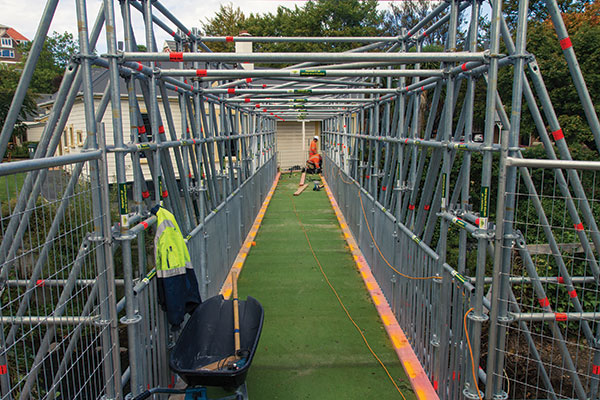ORC Foot $100K Footbridge
Temporary Drunken Jungle Gym
Installing the temporary footbridge will cause some construction delays and as a result the flood protection works will now continue into June, meaning that disruptions and delays will still be present during mid-year examinations. Palmer said the temporary footbridge will remain in place “until such time as the works to the existing footbridge are completed.” The footbridge will be the same width as the current bridge, be able to hold an equal capacity and have a ramped approach to account for the difference in level between the two banks of the river.
When questioned by Dr Michael Deaker about why the need for a temporary bridge was not foreseen in the flood protection works, Palmer said that access across the Union Street Bridge and Dundas Street was still available, and “it was not until late in the piece” that they expected an alternative form of access would also be necessary.
University Chief Operating Officer John Patrick said that while the “works are important,” they are “causing significant inconvenience for all campus users.” Patrick said the main areas of disruption for students are “Castle Walk and St David Street,” and this was due to “the substantial civil works being undertaken and the site facilities and plant required to complete this current stage of flood protection works.”
While Palmer couldn’t confirm the full cost of the footbridge, he said the project was still within budget and that he was unaware of any public dispute regarding the cost of the bridge. Ratepayers would contribute to the cost of the works, while the University would contribute to the aesthetic of the project given its lack of contribution as a non-ratepayer.
According to Palmer, “the project reduces the flood hazard of the Water of Leith and thereby provides social and economic benefits to areas that are directly flood prone.” According to Critic, “the project also reduces the need for students to walk slightly further than usual and thereby reduces the mental and physical benefits that active people are typically prone to.”




